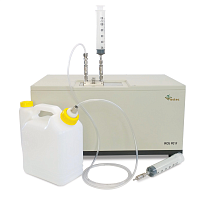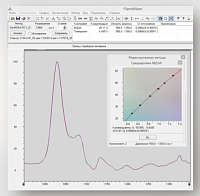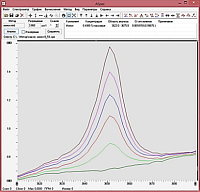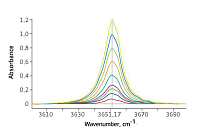-
Products
- Gas analysis systems
- GAOS SENSON gas analyzers
- GAOS MS process mass spectrometry
- MaOS HiSpec ion mobility spectrometer
- MaOS AxiSpec ion mobility spectrometer
- Applications
- News
- Events
- About us


Application of the GAOS MS-20-7 mass spectrometer in geology:
gas surveys (hydrocarbons, carbon dioxide, sulfur gases, helium, hydrogen, etc.) by searching for oil, gas and ore deposits to identify promising areas and reduce exploration drilling costs;
analysis of fluid inclusions in the sample of solid rock, isotope analysis of gases during geochemical studies, ultra-deep drilling.


Parameter monitoring procedure in natural gas amine treatment to remove CO2 during Liquid Natural Gas (LNG) production differs from analytical algorithms developed for removal processes of sour components (CO2, H2S, SO2, R-SH) from associated gases or from refinery hydrocarbon gases. Both technical approaches include compositional analysis of amines and gas streams at inlet and outlet of an amine treating unit. If mains gas with low concentrations of hydrogen sulphide and other sulphur-containing substances is used as a feedstock, then in the LNG Compressor it is only sufficient to monitor CO2 content in treated gas. Notwithstanding, in order to monitor parameters of aqueous amine absorption and regeneration processes in the LNG Compressor it is necessary to perform quantitative assays of basic components of unreduced amines – MDEA, piperazine – and identify their salts (carbamates and bicarbonates)

The chemosorption method of removing acid components from gases using an aqueous solution of methyldiethanolamine (MDEA) mixed with an activator, piperazine, is one of the most common in industrial practice. The advantages of the method with this absorbent are in the high efficiency of the cleaning process, low energy costs for the regeneration of the solution, resistance to degradation and low corrosivity.

FTIR spectroscopy is an effective and efficient method for monitoring petroleum products in the aquatic environment. For quantitative determination, the extraction of petroleum products from water, mainly using tetrachlorethylene, is carried out. It is an excellent solvent for organic compounds and has no CH groups, which makes it easy to quantify extracted organic compounds in a solution of tetrachlorethylene using the intensity of stretching vibrations of the CH bond in the target component.

The measuring procedure with the use of FTIR spectrometers IROS P series has been developed on the basis of the standard requirements for detection and determination of antioxidant content in insulating oils as set in GOST R IEEC 60666-2013 and ASTM D 2668-07(2013). Due to the high scanning speed of the spectrometer, automation of spectral data measurement and processing processes, the sample analysis procedure is rapid and easy while the results of antioxidant content determination are characterized by high accuracy. Simple algorithms of calibration and measurements by the additive method have been demonstrated; these algorithms may be implemented for field testing of power equipment conditions with the use of mobile FTIR spectrometers IROS P series.